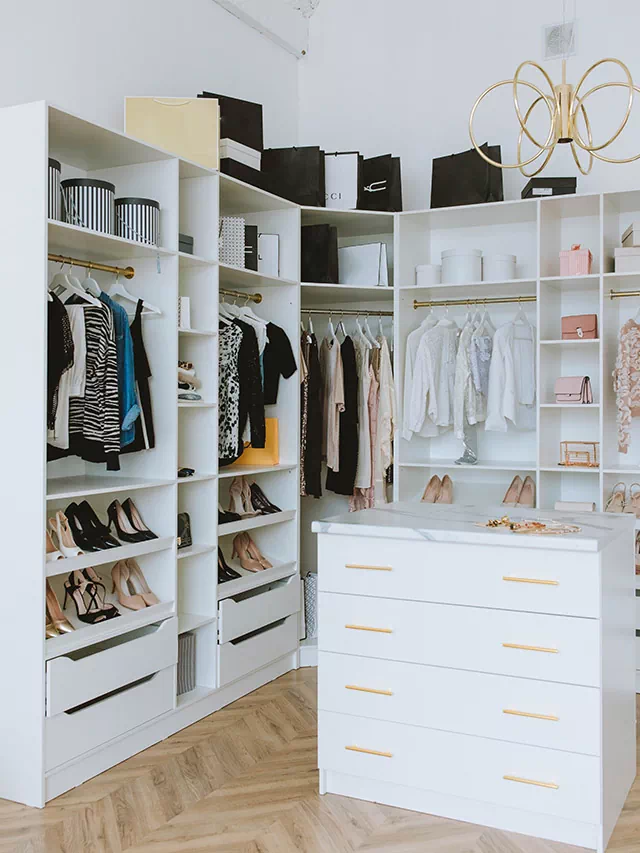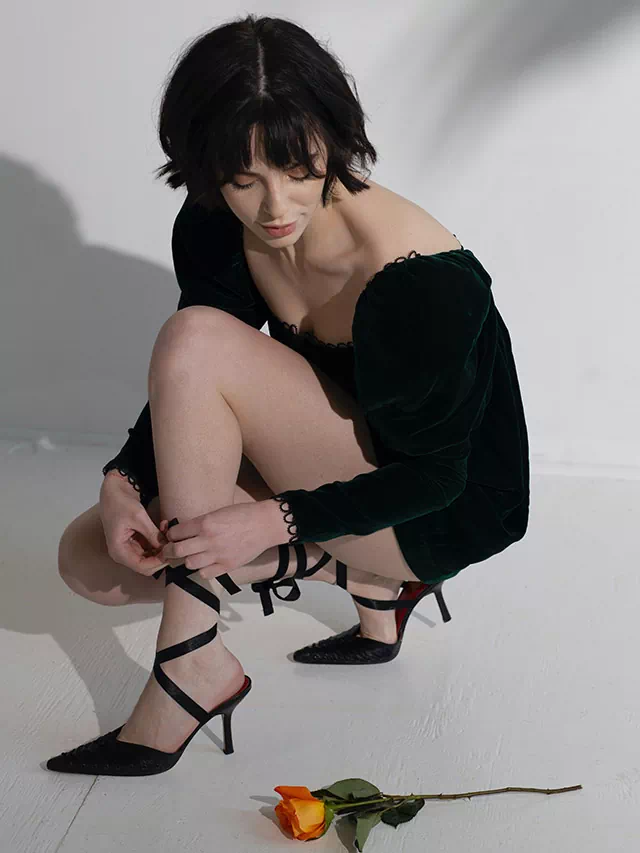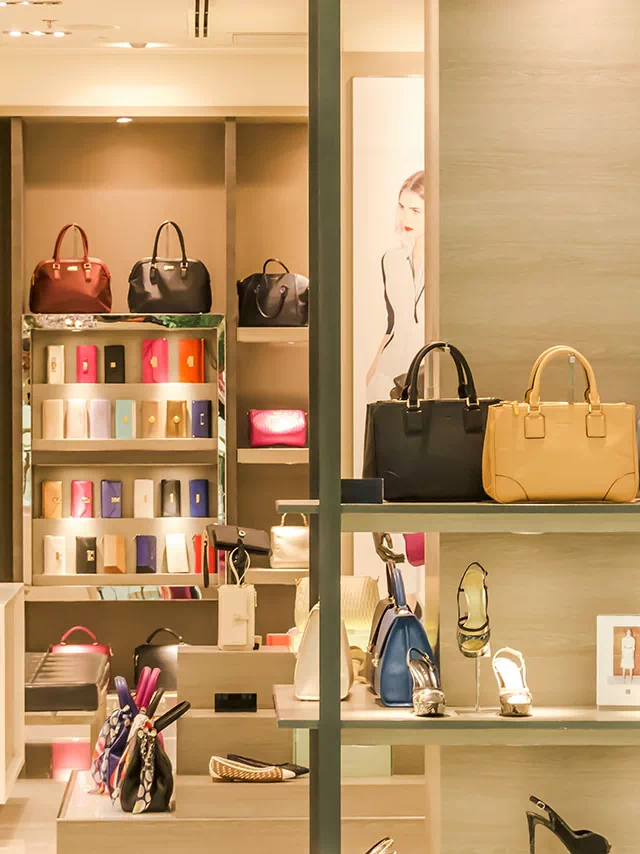Choosing the perfect outfit for a special occasion can be a daunting task. From selecting the right color and style to ensuring your outfit is appropriate for the event, there are many factors to consider. However, with a few tips and tricks, you can create an outfit that makes you feel confident, comfortable, and stylish. Whether you’re attending a wedding, a gala, or a formal dinner, the right outfit can help you make a great impression and enjoy the event to the fullest. In this article, we’ll provide you with 30 tips for creating the perfect outfit for a special occasion.
Consider the Occasion
The type of event you are attending will have a significant impact on the kind of outfit you should wear. You should consider the formality of the event, the time of day, and the location. For a formal event, such as a gala or awards ceremony, you will need to wear an evening gown or a tuxedo. If it is a semi-formal event, such as a wedding or dinner party, a cocktail dress or suit is appropriate. For a casual event, such as a daytime brunch or barbecue, you can wear more relaxed clothing, such as a sundress or khaki pants.
Choose the Right Colors
Color is an essential component of any outfit, and you should consider the occasion and your personal style when choosing a color scheme. If the event has a specific theme or color scheme, you should incorporate these colors into your outfit. For example, if you are attending a Christmas party, wearing red and green would be appropriate. If there is no particular theme, you can choose colors based on the season, such as pastels for spring or warm earth tones for fall.
Find the Perfect Fit
The fit of your outfit is critical to creating a polished and sophisticated look. You should choose clothing that flatters your body type and accentuates your best features. If you are wearing a dress or suit, you should have it tailored to ensure a perfect fit. Pay attention to details such as sleeve length, hemline, and waistline. Make sure your outfit is comfortable and allows you to move freely.
Accessorize
Accessories can take your outfit to the next level and add a personal touch. Choose accessories that complement your outfit and reflect your personal style. For a formal event, you can wear statement jewelry, such as chandelier earrings or a bold necklace. A clutch or handbag is also essential for carrying your essentials. For a more casual event, you can opt for more relaxed accessories, such as a statement scarf or a pair of sunglasses.
Consider the Details
The details of your outfit can make a big difference in your overall look. You should pay attention to the fabric and texture of your clothing, as well as the way it fits. For example, a silk blouse or a velvet blazer can add a touch of elegance to your outfit. Your hair and makeup should also complement your outfit and the occasion. Consider the overall silhouette of your outfit, and make sure it is flattering and appropriate for the event.
Consider the Season
The time of year can influence the kind of outfit you wear. In the summer, you may want to wear lighter fabrics, such as cotton or linen, and choose bright colors or prints. In the fall, you can opt for warmer fabrics, such as wool or cashmere, and deeper shades, such as burgundy or navy. In the winter, you will want to wear thicker fabrics, such as wool or velvet, and add layers for warmth. In the spring, you can incorporate pastels or floral prints into your outfit.
Think About Your Shoes
Your shoes can make or break your outfit, so it’s important to choose the right pair. For a formal event, you may want to wear heels, but make sure they are comfortable enough to wear all night. For a more casual event, you can opt for flats, sandals, or sneakers, depending on the occasion. Consider the color and style of your shoes and make sure they complement your outfit.
Don’t Forget Undergarments
The right undergarments can make a significant difference in the way your outfit looks and feels. Make sure you have the right bra, underwear, and shapewear to create a smooth silhouette and enhance your curves. If you are wearing a dress or skirt, choose the right kind of hosiery that matches your skin tone and complements your outfit.
Plan Ahead
It’s important to plan your outfit ahead of time to ensure that you have everything you need. Lay out your clothes and accessories the night before, and make sure they are clean and wrinkle-free. If you are wearing a new outfit or shoes, make sure to break them in before the event to avoid any discomfort. Consider bringing a backup outfit or accessory, just in case.
Be Yourself
Finally, the most important thing is to be yourself and let your personality shine through. Choose an outfit that reflects your personal style and makes you feel confident and beautiful. Don’t be afraid to take risks and try something new, but always stay true to who you are. When you feel good about yourself, you will radiate beauty and make a lasting impression at any special occasion.
Consider the Dress Code
Some events may have a specific dress code, which will guide your outfit choices. For example, a black-tie event may require formal gowns and tuxedos, while a cocktail party may call for semi-formal attire. Make sure to check the dress code before choosing your outfit, and if you’re unsure, don’t be afraid to ask the host or organizer for clarification.
Think About Comfort
While it’s important to look your best, it’s also important to be comfortable. If you’re going to be sitting or standing for long periods of time, make sure your outfit allows for ease of movement and isn’t too tight or restrictive. Wear shoes that you can walk in comfortably, and avoid accessories that are too heavy or cumbersome.
Consider the Weather
Depending on the location and time of year, the weather may play a role in your outfit choices. If it’s hot and humid, opt for lightweight fabrics that will keep you cool and comfortable. If it’s cold, make sure to layer your clothing and wear warm outerwear. Consider bringing a jacket or coat that complements your outfit, and make sure to have an umbrella or raincoat on hand if needed.
Coordinate with Your Partner
If you’re attending the event with a partner, consider coordinating your outfits so that they complement each other. This doesn’t mean you need to wear matching outfits, but you should choose colors and styles that go well together. For example, if your partner is wearing a navy suit, you could wear a dress in a complementary color, such as burgundy or emerald green.
Show Your Personal Style
While it’s important to consider the occasion and dress code, don’t be afraid to show off your personal style. Incorporate elements that reflect your unique taste and personality, whether it’s a bold print, a statement accessory, or a pop of color. When you feel like yourself, you’ll be more confident and comfortable, which will help you make a lasting impression at any special occasion.
Balance Your Outfit
When putting together an outfit for a special occasion, it’s important to strike a balance between different elements. For example, if you’re wearing a statement piece, such as a sequined dress or a bold blazer, keep the rest of your outfit simple and understated. If you’re wearing a dramatic hairstyle or bold makeup, consider toning down your outfit to avoid overwhelming your look.
Accessorize Thoughtfully
Accessories can make or break an outfit, so it’s important to choose them thoughtfully. Consider the occasion and your outfit when choosing your accessories. For a formal event, you may want to choose more elegant pieces, such as diamond earrings or a pearl necklace. For a more casual event, you can choose more playful accessories, such as a colorful scarf or statement earrings. Make sure your accessories complement your outfit and don’t overpower it.
Dress for Your Body Type
When choosing an outfit, it’s important to dress for your body type. Choose pieces that flatter your figure and highlight your best features. For example, if you have an hourglass figure, you may want to choose a dress that cinches at the waist to accentuate your curves. If you have a pear-shaped figure, you may want to choose a dress that flares out at the bottom to balance out your silhouette.
Consider the Venue
The venue can also play a role in your outfit choices. If you’re attending an event in a formal ballroom, you may want to choose a more formal outfit, such as a gown or tuxedo. If you’re attending an outdoor event, you may want to choose a more casual outfit that can withstand the elements. Consider the environment and atmosphere when choosing your outfit.
Practice Good Grooming
Good grooming can make a big difference in your overall appearance. Make sure your hair, nails, and makeup are done neatly and professionally. Take care of any unwanted hair, such as stray eyebrow hairs or facial hair. Make sure your outfit is clean and wrinkle-free. When you feel put-together and polished, you’ll be more confident and ready to make a great impression at your special occasion.
Experiment with Different Styles
Don’t be afraid to try something new when it comes to your outfit. Experiment with different styles, colors, and patterns to see what works for you. If you typically wear neutral colors, try adding a pop of color to your outfit. If you typically wear dresses, try wearing a pantsuit or jumpsuit. You may be surprised at what you discover and find a new style that you love.
Get a Second Opinion
If you’re unsure about your outfit, ask a trusted friend or family member for their opinion. They may be able to offer insights or suggestions that you hadn’t considered. Just make sure to choose someone whose opinion you trust and who has your best interests in mind.
Consider the Time of Day
The time of day can also play a role in your outfit choices. If you’re attending an event during the day, you may want to choose lighter fabrics and colors, such as pastels or whites. If you’re attending an event in the evening, you may want to choose darker colors and more dramatic styles.
Pay Attention to Details
Details can make a big difference in your outfit, so make sure to pay attention to them. Make sure your shoes are polished and in good condition. Choose the right undergarments for your outfit to ensure a smooth silhouette. Make sure your jewelry and accessories complement your outfit and don’t clash with it.
Practice Good Posture and Body Language
Finally, it’s important to practice good posture and body language when wearing your outfit. Stand up straight and keep your shoulders back to project confidence and poise. Make eye contact and smile to show that you’re friendly and approachable. When you look and feel confident, you’ll be more likely to enjoy your special occasion and make a positive impression on others.
Dress for the Season
The season can also impact your outfit choices. For example, you may want to choose a lightweight dress or breathable fabrics for a summer event, while a winter event may require a thicker fabric or layering. Consider the weather and temperature when selecting your outfit to ensure you’re comfortable and appropriately dressed.
Don’t Forget About Comfort
While it’s important to dress appropriately for the occasion, it’s also important to prioritize your comfort. If you’re wearing uncomfortable shoes or a dress that’s too tight, you may not enjoy the event as much. Choose an outfit that makes you feel confident and comfortable, so you can focus on enjoying yourself.
Take Your Time
Don’t wait until the last minute to choose your outfit. Take your time to plan and prepare, so you can feel confident and put-together on the day of the event. Give yourself plenty of time to try on different outfits, make alterations if necessary, and select the right accessories.
Be Yourself
Ultimately, the most important thing is to be yourself. Choose an outfit that reflects your personality and makes you feel confident and comfortable. Don’t try to be someone you’re not or wear something that doesn’t feel true to who you are. When you feel authentic and true to yourself, you’ll be more likely to enjoy the event and make a positive impression on others.
Have Fun
Finally, remember to have fun! A special occasion is a time to celebrate and enjoy yourself. Don’t get too caught up in the details or stress about your outfit. Focus on having a good time and making memories with the people you care about. When you’re having fun, you’ll radiate positivity and make a great impression on others.
Creating the perfect outfit for a special occasion can seem overwhelming, but with the right guidance, it doesn’t have to be. By considering factors such as the event type, dress code, and your personal style, you can create an outfit that makes you feel confident and comfortable. Remember to pay attention to details such as accessories, shoes, and undergarments, and don’t be afraid to experiment with different colors and styles. By following the tips outlined in this article, you’ll be well on your way to creating a stunning outfit for your next special occasion. So go ahead, enjoy yourself, and make a lasting impression!









